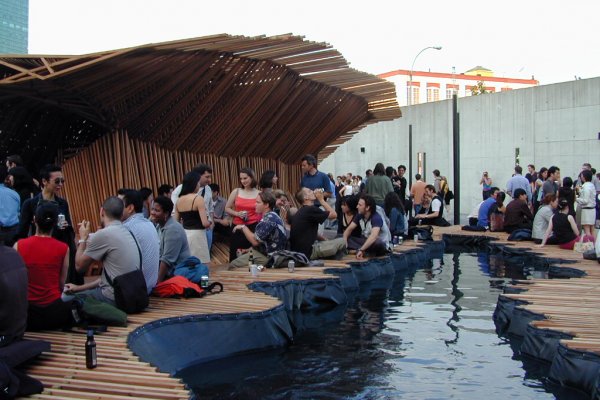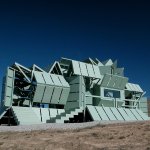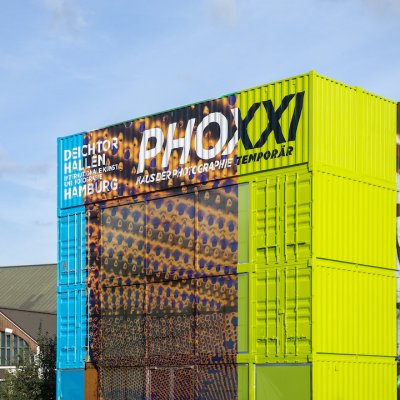TEMPORARY VS PERMANENT
We usually tend to view architecture as permanent, as aspiring to the status of monuments, and that kind of architecture surely has its place. But so does architecture of a different sort, temporary architecture that contests the preoccupation of architecture as permanent. An architecture that precisely distinguishes itself by its impermanence, and its physical departure from the site.Interestingly enough, both understandings go way back to the very origins of the theory and critical reflection of architecture in the Western world. Since Vitruvius—the prolific architect and scribe of antiquity—the primitive hut has been an example of the temporary and ephemeral origin of architecture, as well as a standard in architectural theory. The reconstruction of the original image of the first archetypal dwelling of mankind probably remains one of the most prevalent leitmotivs in architecture theory and building practice to this very day. Marc-Antoine Laugier—the 17th century French Jesuit priest and maybe first modern architecture philosopher—stated that Ancient Greek temples owed their form to these earliest habitations erected by man. The primitive hut had a horizontal beam supported by tree trunks planted upright in the ground and a tent-like roof that kept out rain, provided shade and, perhaps just as importantly for a hunter/gatherer, offered mobility. Simple and easy to erect by draping a skin or leaves over a branch, this rudimentary, temporary tent actually represents man’s first architectural work. Over time, this structure naturally grew in complexity, and did not necessarily retain its mobility. However, against the backdrop of these early reflections about the impermanent infancy of the architectural practice, Vitruvius also imparted three principal and permanent virtues in his book De architectura unto the Western architects that would fall under his influence, which roughly translate to utility, durability and beauty. With these virtues firmly in place, Vitruvius equated the Roman Empire’s commanding marble cities with built perfection. The monuments that he extolled in the first century BC are an unmistakable tribute to the import of permanence.
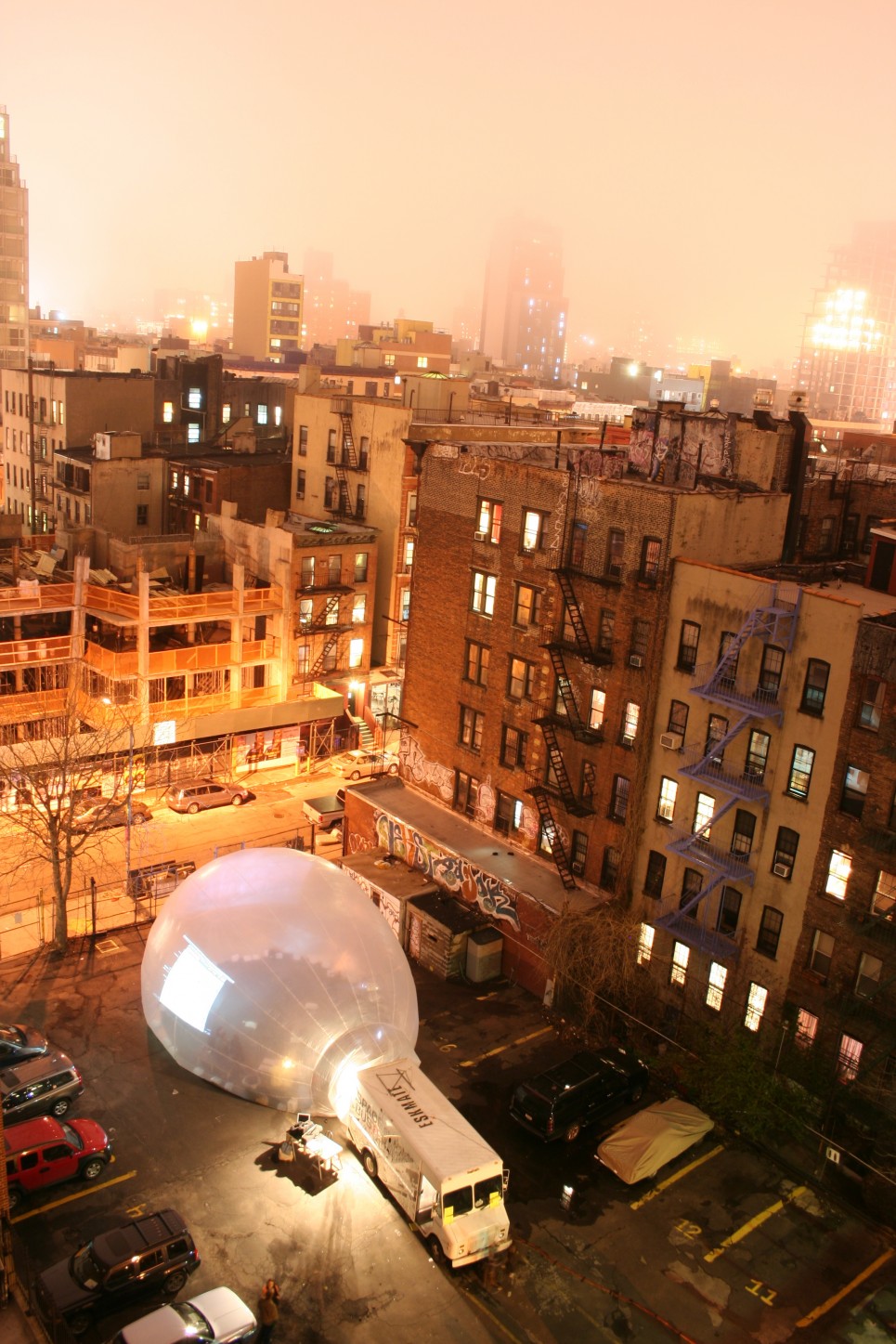 Over the centuries, the association of great architecture as fixed and timelessly permanent has lost traction, along with the Vitruvian triad. Our environment has been built, altered and rebuilt in overlapping waves. While some buildings stand the test of time, most seem to expire in relevance. Today we increasingly witness new tendencies within the profession that lean more towards a polar opposite of Vitruvian values. Such temporary design practices often exist on the fringe of architecture and are dealing with the absence of physical matter—with the qualities of airiness and ephemerality. They take us back to the fleeting beginnings of the building practice per se.
Over the centuries, the association of great architecture as fixed and timelessly permanent has lost traction, along with the Vitruvian triad. Our environment has been built, altered and rebuilt in overlapping waves. While some buildings stand the test of time, most seem to expire in relevance. Today we increasingly witness new tendencies within the profession that lean more towards a polar opposite of Vitruvian values. Such temporary design practices often exist on the fringe of architecture and are dealing with the absence of physical matter—with the qualities of airiness and ephemerality. They take us back to the fleeting beginnings of the building practice per se.PAVILIONS OF THE FUTURE
There might be something contradictory about architecture that is not meant to last, but obviously such temporary architecture also serves a different purpose from permanent architecture. And one needs only to think of world fair, exhibition, pavilion and festival architecture to realize that temporary architectures have been flourishing for centuries. Some of the world’s most famous buildings were not built to last, yet they have stayed put nonetheless. Gustave Eiffel‘s temporary tower survived way beyond its intended tenure presiding over the 1889 Exposition Universelle in Paris. So did Mies van der Rohe’s German national Pavilion for the 1929 International Exposition in Barcelona or more recently Olympic Park’s numerous temporary sporting venues built for the 2012 Summer Olympics in London. In most cases, these temporary architectures function largely as an exhibit and even more essentially as an advertisement for new materials, techniques and designs. They also clearly served a rhetorical and political function of communicating to and convincing crowds.Thereby some of the most extreme and radical designs in the history of modern architecture were actually realized in such temporary buildings. With specific regard to pavilion architecture, historian Beatriz Colomina argues in her brilliantly written essay, “Pavilions of the Future”, that historically, “pavilions made dreams seem real, and reality seem dreamlike... the unique role of a pavilion [is] to fuse image and structure... The pavilion is the key instrument for negotiating the relationship between image and physical structure.”
TEMPORARY ARCHITECTURE THROUGHOUT THE AGES
Beyond the architectural significance of pavilions for modern architecture, the tradition of temporary architecture goes back much further. In fact, it goes all the way back to antiquity. Many temporary structures were erected for religious rites in the ancient world. The tabernacle of the Jews, for example, was a portable enclosure of wooden posts and fabric, a place of sacrifice and worship that was carried through the wilderness during the Exodus, and that influenced the form of the original temple and all synagogues to follow.Another instance amongst many, is the fact that both the Greek and the Roman temples are basically stone versions of their wooden predecessors. But as Sarah Bonnemaison and Christine Macy note in their excellent scholarly compendium on Festival Architecture, this history of temporary architecture “is not only restricted to religious constructions, it also includes architectural works commissioned by rulers to celebrate and proclaim their reign.” Yet, a coherent history of temporary and festival architectures emerges only in the Early Renaissance and all the major architects had their experience in staging festivals at courts or in cities for emperors, popes and princes across Europe. At that time, such structures became a distinct genre, an art form to be cultivated, throughout Europe.
This genre reached its perfection in the Baroque when political conditions were most favorable. Renaissance and Baroque temporary structures were erected for the sake of public celebrations and public mooring. They were decorative edifices usually laden with figurative and ornamental sculpture, paintings, emblems, and inscriptions. Such temporary structures were virtually ignored by art historians until the mid 20th century. Throughout the ages, these constructions ranging from coronations to consecrations, and carnivals to world expositions, have allowed architects to experiment with new ideas, new forms and new spatial arrangements, and thereby also played a much neglected role in the development of Western architectural and urban theory.
RECLAIM THE STREETS
In different ways, these temporary architectures indeed raise significant questions around participation and the negotiation of the urban imagery in a broader sense. What stands out about these temporary architectures is their public aspect and their power to generate spatial imagination in the urban realm. Throughout history they were all too often used as political tools in the service of ruling elites, but also against them. The latter we are increasingly witnessing in an interesting recurrence of the ephemeral within the urban discourse, namely the epochal unfolding of a worldwide wave of political movements that temporarily occupy existing urban spaces. From its origins in the global demonstrations in Spring 1968 in Paris and its international successors, to the more recent protests on Wall Street in New York, Tahrir Square in Cairo, Taksim Square in Istanbul, Puerta del Sol Square in Madrid, Maidan Square in Kiev (as well as a myriad of smaller ones), cognate groups around the world are part of an urban protest movement that is both global and local.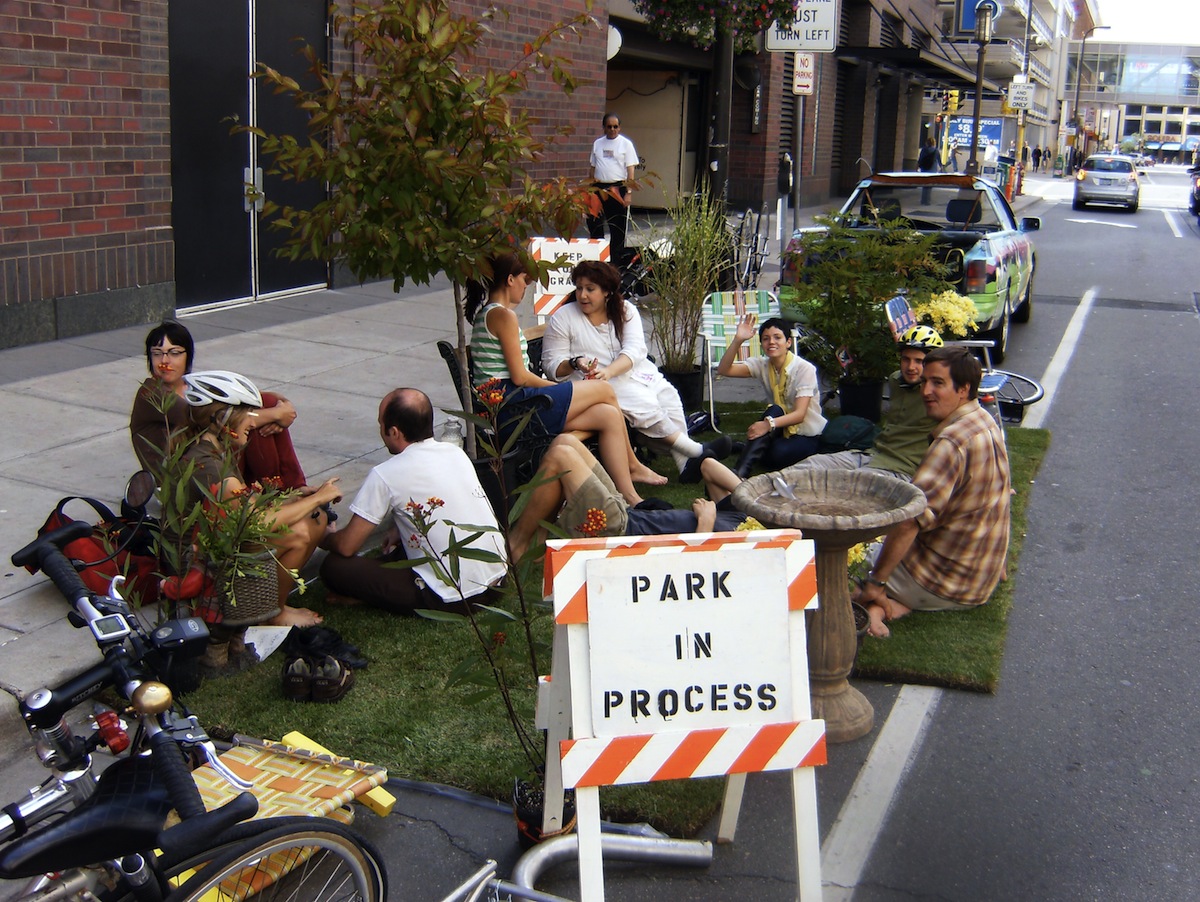 All of these sites have activated discussion and demonstrated a version of live negotiation about space in the city through a temporary intervention. The protesters here occupy highly sensitive public spaces and often even camp out in them in temporary architectures, such as tents and bricolage-like baricades. The city here truly emerges as a “strategic site for understanding some of the major new trends reconfiguring the social order,” as sociologist Saskia Sassen points out in her Globalizations article “The Global Street: Making the Political”. As she continues, “The city and the metropolitan region are one of the locations where major macro and global trends, even when not urban, materialize; it is, then a space that can give us knowledge about developments that are not urban per se.” Just as temporary structures inherently dispute the dominant role of architecture as an ever-lasting solution, temporary occupation of urban space proactively questions the social fabric of the existing city.
All of these sites have activated discussion and demonstrated a version of live negotiation about space in the city through a temporary intervention. The protesters here occupy highly sensitive public spaces and often even camp out in them in temporary architectures, such as tents and bricolage-like baricades. The city here truly emerges as a “strategic site for understanding some of the major new trends reconfiguring the social order,” as sociologist Saskia Sassen points out in her Globalizations article “The Global Street: Making the Political”. As she continues, “The city and the metropolitan region are one of the locations where major macro and global trends, even when not urban, materialize; it is, then a space that can give us knowledge about developments that are not urban per se.” Just as temporary structures inherently dispute the dominant role of architecture as an ever-lasting solution, temporary occupation of urban space proactively questions the social fabric of the existing city.POP-UP URBANISM
This novel form of bottom-up instigated temporary urbanism reaches far beyond today’s social and political movements and is influencing contemporary urban planning and design strategies. Coined as spontaneous, pop-up, do-it-yourself, tactical or temporary urbanism, this emerging new field of planning includes temporary interventions and spaces that are as short as a few hours or as long as a number of years, those that are both legal and illegal, and those that are community driven, state-sanctioned or privately financed. These temporary spaces convey just a taste of the intense and diverse language of creative spatial practices. In their often poetic eccentricity they are also expressions of a shifting, multi-dimensional understanding of architecture and space.The discipline of space creation has long since ceased to be the exclusive domain of architects. For many creatives it has now become an emotionally-charged expression of their urge for originality in spatial structures. This of course means that architects are losing their traditional sovereign right to the formal design of spaces, but it is precisely in the overthrow of established etiquette in our built surroundings that the unique chance arises to discover new and fascinating space worlds. Although we usually understand architecture to be a statically fixed discipline where objects are generally built to last, the process-like nature of many of these projects are united in their impermanence. Whether realized as an attempt to generate public and political awareness, a grassroots initiative pioneered by local groups to improve their own neighborhoods, or a larger-scale municipal or private investment intended to generate profit on otherwise economically redundant land, both the intentions and strategies that fall under the umbrella concept of “temporary urbanism” and “temporary spaces”.
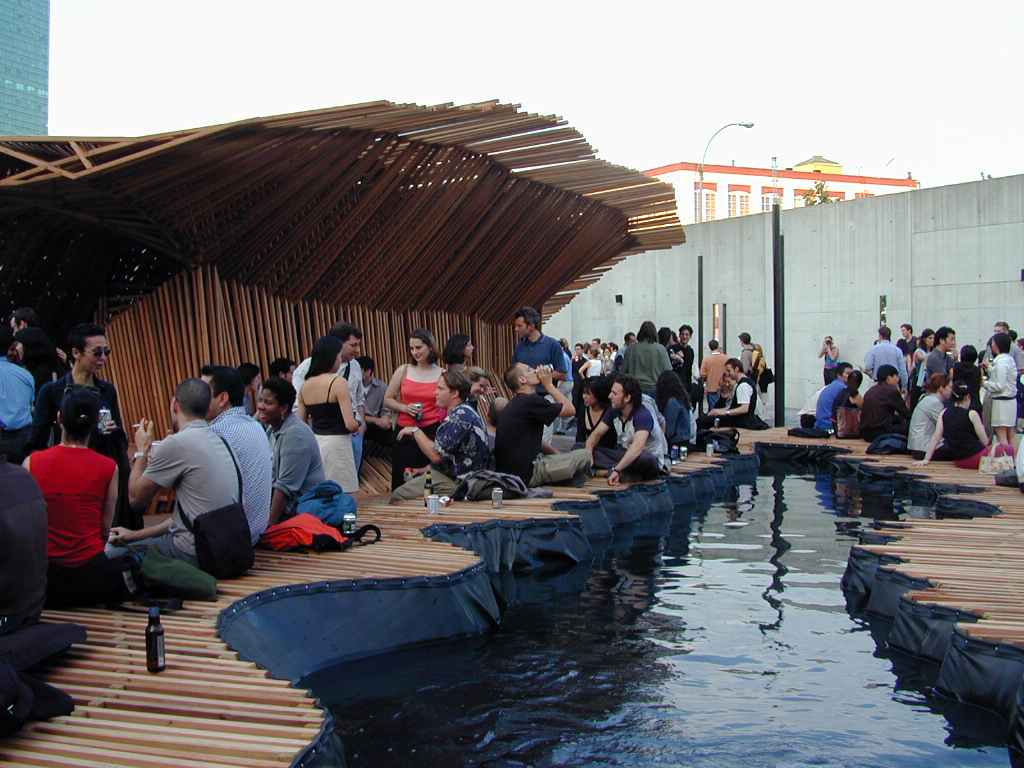 As diverse and manifold as this temporary planning strategy might be, a potential benefit of it surely is that it allows for the testing of new possibilities in construction and spatial experience because of the smaller scale, shorter time frame and freedom to exist on sites inaccessible to permanent architecture. The classical Vitruvian triad that an architectural structure must be solid, useful and beautiful is replaced by a new triad of virtues: the light, the quick and the cheap. With the economic impacts of large-scale developments being questioned, small-scale temporary architecture and urbanism has, as Carole Lévesque argues in her essay “Reconciling Poetics and Ethics in Architecture”, the liberty to explore and test larger themes through direct engagement with their site and their audience. The experimentation and reversibility afforded by temporary use practices can encourage a multilayered approach to land use and increase the likelihood that a vacant space will eventually find permanent use. As short-term actions to effect long-term change, these temporary interventions in the urban realm unveil unpredictable, educational opportunities. This is as true for development and city planning as it is for architecture. Therefore an embrace of the temporary and tactical may not be perfect, but it could be one of the strongest tools in the arsenal of city-building we’ve got today.
As diverse and manifold as this temporary planning strategy might be, a potential benefit of it surely is that it allows for the testing of new possibilities in construction and spatial experience because of the smaller scale, shorter time frame and freedom to exist on sites inaccessible to permanent architecture. The classical Vitruvian triad that an architectural structure must be solid, useful and beautiful is replaced by a new triad of virtues: the light, the quick and the cheap. With the economic impacts of large-scale developments being questioned, small-scale temporary architecture and urbanism has, as Carole Lévesque argues in her essay “Reconciling Poetics and Ethics in Architecture”, the liberty to explore and test larger themes through direct engagement with their site and their audience. The experimentation and reversibility afforded by temporary use practices can encourage a multilayered approach to land use and increase the likelihood that a vacant space will eventually find permanent use. As short-term actions to effect long-term change, these temporary interventions in the urban realm unveil unpredictable, educational opportunities. This is as true for development and city planning as it is for architecture. Therefore an embrace of the temporary and tactical may not be perfect, but it could be one of the strongest tools in the arsenal of city-building we’ve got today.VOID FINALITY
City-making may have happened all at once at the desks of master planners, but that’s really not the way things should happen today anymore. No single master plan can anticipate the evolving and varied needs of an increasingly diverse population or achieve the resiliency, responsiveness and flexibility that shorter-term, experimental endeavors can. Which is not to say long-term planning doesn’t have its place, but there is undeniable opportunity in the temporary: it is an apt response to a civilization in flux. Acknowledging the possibilities of temporary and ephemeral approaches in architecture and urban planning, opens up scope for action that penetrates, extends and dissolves the classical idea of solid and permanent space. With the influence of accelerated changes wrought by novel technologies and shifts in social perceptions of the world on architecture, approaches are being formulated that are increasingly turning to the dynamic, transversal and performative character of the contemporary city.Clinging to static perceptions of the world do not allow for a quick response to an ever evolving set of circumstances. Navigating this world requires flexibility and freedom. Maybe the architecture of the future will therefore no longer be strictly the province of the static, the monumental, the permanent, but will share the stage with the temporary and the fleeting and whole-heartedly embrace impermanence. Or to quote French philosopher and poet of space, Gaston Bachelard in his 1976 book The Poetics of Space, “It is better to live in a state of impermanence, than in one of finality.”
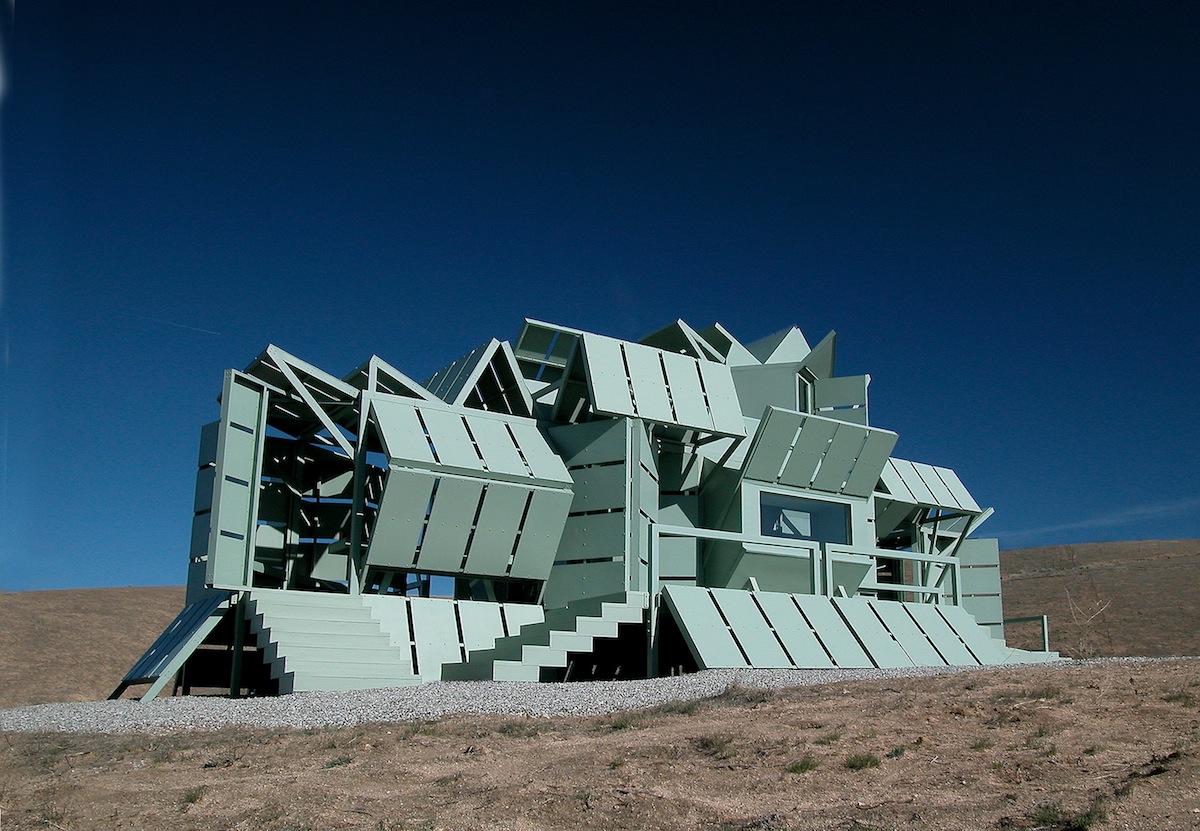
Written by Lukas Feireiss
A shorter version of this article was first published by the author under the title “Pretty Vacant. Embracing Impermanence in Architecture and Urban Planning” in Transforming Cities: Urban Interventions in Public Space, Berlin, 2014 (Kristin Feireiss and Oliver G. Hamm, Eds.)


